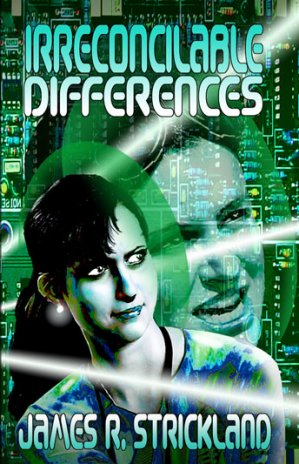At Denvention 3, at the Denver Convention Center. I used to hit just about every worldcon or NASFIC, but my life got a lot more complicated in the mid-80s, and the energy I used to put into writing SF began to go into computer books. Then when Keith and I kicked off our own publishing company, yikes! So I haven't been to a Worldcon in 8 years, and haven't been to a con at all since the 2005 Windycon when ISFiC Press launched The Cunning Blood.
It was nice to be back, and it took me awhile to discern why: This is a Worldcon of Unusual Size, which is to say, small enough not to exhaust me with its hugeness, but still big enough to draw old friends from the far corners of the country into a single graspable space. Why it wasn't more popular is a puzzle; Denver is a Huge City of Unusual Size (HCUS) too, small enough to not overwhelm but large enough to be quirky and interesting. It's also one of the cleanest and most beatiful huge cities in the US, followed by Seattle and then (perhaps) Chicago, both of which suffer incresingly from size and congestion. I'm getting to be more of a small-town guy as I get older, and in my perspective even Denver is a shade big for permanent residence, but if somebody bombed Colorado Springs, I'd probably just scoot up I-25 and stay here. (Pete Albrecht continues to worry about us moving to Nebraska, but I've grown mighty used to dry climates since I first discovered them in 1987.)
I got here Thursday about suppertime and checked into the Westin Tabor Center, which has great beds and showers but lousy soundproofing, and perhaps the noisiest plumbing of any major hotel I've ever visited. This morning I awoke to a sequence of three showers, one to either side of me and then another above me. I know, I know, I'm an Insomniac of Unusual Sensitivity (IUS) and waking me up doesn't take much. The toilet tank refilling made a sound that should be sampled for a film involving spacecraft of unusual propulsion systems (SUPS) which is odd, considering how gutless the low-flow flush process itself proved to be.
But the first item on the agenda was the Flying Pen Press premiere party over at the Tattered Cover Bookstore, at which Jim Strickland would be reading briefly from his second novel, Irreconcilable Differerences. The book is terrific and I'll post a detailed review here shortly; I want to read it again now that I have it in paper. But it may establish a brand-new subsubgenre that I might as well call “cyberbilly,” which is to say, cyberpunk in the small-town American heartland. Jim reads fiction well for an audience, and while most of the other books presented left me cold, I was left giggling by a short snippet read from David Boop's new book, She Murdered Me wth Science, which, well, defies description. David has done time as a stand-up comic and it shows, and the event as a whole reminded me that I've read my own work in front of an audience precisely once, and need to practice a little.
Yesterday morning I finally got down to the convention proper, and started running into people almost immediately; first Eric Bowersox, then Alex and Phyllis Eisenstein, then Bonnie Jones, Kelley Higgins, and (later) Bill Higgins. I had lunch with Mike and Alice Bentley, and eventually collided with Jim Strickland and his wife Marcia Bednarcyk. We camped out on one of the nice sofas set near the autographing tables and ended up spending the rest of the afternoon there, hashing out the issues of how the SF publishing business is changing, and how writers of insufficient reputation (RIR) can take advantage of the changes we're seeing. “Write more!” was Eric's completely incontestable answer (directed primarily at me), but tonnage, while important, is not sufficient. The issue remains open, but I got some great insights from both Marcia and Alice Bentley, who works part-time for Studio Foglio and pays attention to other small and very small press operations in this industry. There may not in fact be a general solution to the problem, but being more visible among the people who read your kind of material is something that kept coming up. This (obviously) leaves less time for actually writing it, especially for guys like me with Unusual Sleep Requirements (USR) but as with almost any system of many equations, there's a sweet spot on the curve somewhere. The main challenge is just finding it.
I'm about to go back over there and see what else may be going on. I have a couple of sessions marked with stickies in the nicely-implemented pocket program, but I will be heading home again later this afternoon. A little con goes a long way with me, but as Worldcons go, I have so far enjoyed this one a great deal.
 One reason I like Jim Strickland's fiction is that I like the way he thinks. He and I look at the future and draw a lot of the same conclusions. I understand his logic, and that helps me appreciate the stories he tells, even if I myself would not tell them in anything like the same way. Being able to toss ideas around with him in person helps a lot; we workshop together, and I've learned quite a bit watching him hone his style.
One reason I like Jim Strickland's fiction is that I like the way he thinks. He and I look at the future and draw a lot of the same conclusions. I understand his logic, and that helps me appreciate the stories he tells, even if I myself would not tell them in anything like the same way. Being able to toss ideas around with him in person helps a lot; we workshop together, and I've learned quite a bit watching him hone his style.











